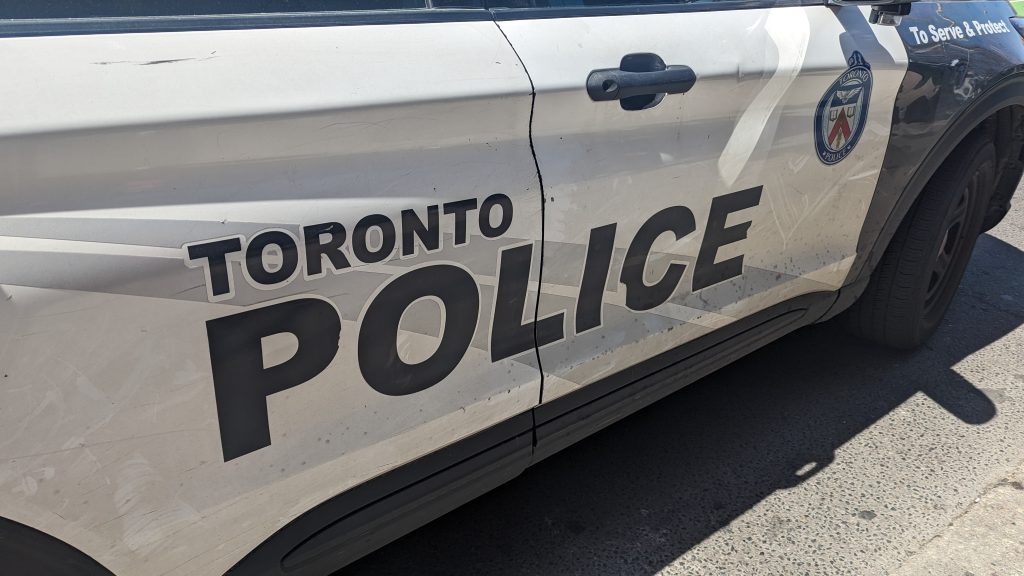Frostbite Vs. Frostnip: Do You Know The Difference?
Posted February 11, 2008 12:00 pm.
This article is more than 5 years old.
It’s the kind of day where it’s painful to even open the door, let alone set a boot-covered foot outside.
Toronto can resemble Winnipeg or Calgary on the thankfully rare kinds of days when low temperatures and even lower wind chills combine to create dangers for those venturing out for even a few minutes.
Frostbite is among the most common.
Mike Whitehead is a first aid instructor who knows a thing or two about getting it and treating it. He discovered that the hard way on a past skiing trip.
“When we got to the bottom of the hill my sister-in-law, who’s a nurse, pointed out that the entire part of my cheek … was white and the rest of the tissue around it was red so she said ‘Mike, you’ve got frostbite.’ We have to go inside now.”
He’ll never forget the pain that went along with the deep freeze.
“When I was starting to get frostbitten, it was a sharp stabbing pain, and when it was defrosting it was a burning sensation,” he recalls.
Frostbite can be a serious condition that if left untreated can cause you to lose fingers and toes.
Here’s an overview of the cold condition and what you should do if Jack Frost does more than nip at your nose.
Frostbite & Hypothermia
The average person’s skin begins to freeze within 10 minutes at bitter wind chills. And while most of us won’t suffer from hypothermia, we could get frostbite.
“Frostbite is a cold injury where a body part or the skin actually freezes,” explains CityNews Medical Specialist Dr. Karl Kabasele. “That can cause damage to the tissue and can result in the loss of a body part or damage to the skin.”
It’s important you know the signs and the differences between a little cold exposure and too much.
Frostnip
This is a mild form, where only the skin freezes. It can appear yellowish or white, but feels soft if touched. It’s accompanied by a painful tingling or burning sensation.
What you should do
Warm the afflicted area gradually. Putting it under hot water or hot air could cause a burn – and you may not be able to feel it before it’s too late. Try not to rub or massage the area, which could cause further damage.
Generally, frostnip isn’t serious and is easily cured when you get out of the cold.
Frostbite
A more extreme form of the cold, it can have far more serious consequences. In this case, both the skin and the underlying tissues are affected, making your flesh look white and waxy and feel hard when touched.
But chances are you won’t be able to feel those touches – the area usually goes completely numb.
Symptoms:
- Redness or pain
- White or grayish-yellow skin
- Skin feels firm or waxy
- Numbness
What you should do
As before, gradually warm the area, using either body heat or warm (not hot) water. Beware of burning the skin, especially since you can’t feel anything right away.
Avoid rubbing or massaging the affected area and if the sensation doesn’t return soon, seek medical attention.
There are also other things you should know before medical attention comes along. Among them:
Put your hands someplace warm – like under your armpits. This will help get them back to normal temperature.
Don’t rub the areas with snow. That’s a myth and will make the problem worse.
Try not to thaw out if you plan on going out again right away. It could make your frostbite worse.
Remember, it doesn’t happen often but untreated frostbite can lead to amputation if the damage is too severe.
Warding off winter
According to the city of Toronto, here are some other things you can do to prevent the season from getting the bite on you:
Maintain a heated environment (City law requires landlords to maintain an adequate heat level of 20 degrees Celsius/68 degrees Fahrenheit between September 15 and June 1 of each year).
Wear layers of warm, dry clothing, including hats and gloves.
Be aware of hypothermia (body temperature of 35 degrees Celsius/95 degrees Fahrenheit or less). Signs include stiff muscles, puffy face, slurred speech, shivering uncontrollably, slowed breathing, poor physical condition and mental confusion. If these signs are recognized, call 911.
Drink non-alcoholic beverages such as tea, coffee, hot chocolate or soup.
Some prescription drugs may increase vulnerability to cold. Check with your doctor or pharmacist.
Be aware of elderly and disabled people living alone; offer assistance if necessary.
Don’t use your oven as a heating device. All space heaters are a fire risk if used improperly.
Protect the homeless by calling the Street Helpline at 1-866-392-3777 if you see someone in distress outside. It’s a free call from any pay phone.










